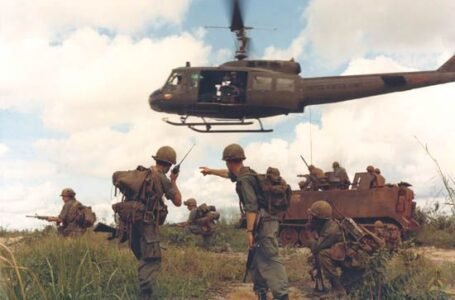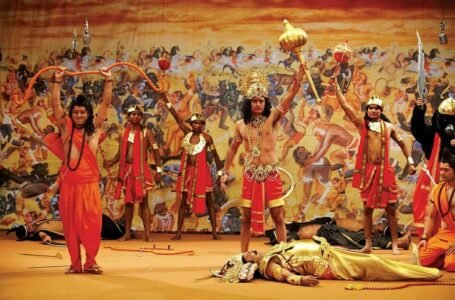R.N. Kao – The Enigmatic Spymaster of India

-Mili Joshi
Three types of people have made a notable dent in history in terms of being called ‘heroes’ in India: freedom fighters, politicians, and military leaders. Rarely do we remember these days the guardians of India’s intelligence network who operate from the shadows. Among these two classes of unsung patriots stands a man whose work truly shaped India’s security architecture and international influence in many ways, understood and otherwise. Rameshwar Nath Kao, or R.N. Kao as he came to be known, was the founder of India’s premier external intelligence agency, the Research and Analysis Wing (R&AW). Known for his stone-like demeanor, unrivaled strategic foresight, and nefariously splendid reputation, Kao remains an iconic yet cryptic figure in the annals of Indian history. R.N. Kao was the mind behind some of the greatest geopolitical and intelligence successes for India, from the creation of Bangladesh in 1971 to merging Sikkim into the Indian Union while building up India’s external intelligence from scratch. The blog will take an insight deep at the life and times of R.N. Kao.
Early Life and Education
Rameshwar Nath Kao was born in Banaras (now Varanasi) of the United Provinces of British India on 10 May 1918 to a distinguished Kashmiri Pandit family. Intellectual brilliance seems to have run in the Kao family. Young Rameshwar was an introverted, observant child with traits that later came to be his biggest assets. He was then educated at Baroda College, now known as Maharaja Sayajirao University of Baroda, where he studied English Literature. Teaching or academics was his initial thought. But destiny had other plans. India, still under British rule, was beginning to appreciate the value of intelligence gathering in a fast-changing postwar world, and Kao was bound to find himself in that secretive world at some point. In 1940, he joined the Indian Imperial Police (IIP)-the elite civil service under British administration. After independence, this would later become the Indian Police Service (IPS). His exemplary service soon earned him a position in the Intelligence Bureau (IB)-India’s oldest internal intelligence agency. This entry into the intelligence establishment was not just a career move for Kao; it heralded the beginning of a legacy. Even as a junior officer, with his genius of analysis, discretion, and leadership skills, he managed to capture the attention of his senior officers.
Building a Modern Spy Network: The Creation of R&AW
In 1962 and 1965, the debacles of India during the Sino-Indian War of 1962 and during the India-Pakistan War of 1965 showed glaring holes in the country’s intelligence apparatus. The Intelligence Bureau, being internally focused, was overburdened and deprived of resources to assess complex external threats. This was an area that desperately needed a foreign intelligence agency of its own. In 1968, under the guidance of Prime Minister Indira Gandhi, R.N. Kao was handpicked to create a new agency that would focus exclusively on external intelligence and counter-espionage. Thus came into being the Research and Analysis Wing. With a tiny skeletal staff and virtually no infrastructure, Kao discreetly commenced the project transformation into one of the most effective, if least known, intelligence institutions in the world.
Structure and Philosophy
Kao modeled R&AW on agencies like the CIA, KGB, and MI6, but with an Indian heart. He made sure that the agency cooperated with the other branches of the Government, especially the Ministry of External Affairs and the Defence Intelligence, while guaranteeing its operational independence.
He gave priority to two vital factors:
Absolute Secrecy
Complete Political Neutrality
Kao understood that in the shadow world, discretion was power. It became the backbone of R&AW’s operational strategy, insistence on low-profile operatives, and long-term strategy.
Landmark Operations Under Kao’s Leadership
- Bangladesh Liberation War (1971)
Perhaps the most famous of Kao’s operations was his maneuvers during the Bangladesh Liberation War. After the Pakistani Army’s savage assault in East Pakistan (now Bangladesh), millions of refugees flooded into India in 1971.
Under Kao’s leadership, R&AW played a unique role in:
Training the Mukti Bahini (freedom fighters)
Sabotaging Pakistani infrastructure
Collecting strategic intelligence
Convincing the international community of Pakistan’s atrocities
These forward-looking strategems helped Indian forces achieve a swift victory in its wartime debacle, culminating in the formation of Bangladesh. This is regarded as one of the fastest and cleanest intelligence-backed military victories of modern times.
- Merger of Sikkim (1975)
In an obscure Himalayan kingdom ruled by the Chogyal dynasty, political unrest began to grow with calls for greater democracy. R.K. Kao’s R&AW strategically backed pro-democracy movements while quietly working towards bringing Sikkim’s future into line with Indian interests.
By 1975, Sikkim would become the 22nd state of the Indian Union with little dissent and international backlash.
- Defeating Assassination Plots and Espionage Networks
Kao was likewise credited for the dismantling of several espionage chains, including foreign spies working in India. His agents defeated several assassination attempts directed at Indian leaders, including one on Indira Gandhi. His understanding of the subtlety of foreign diplomacy often kept India a step ahead in the complex geopolitical games of the Cold War era.
The Man Behind the Curtain
Kao was not the typical spy you’d expect to see in Hollywood movies. Tall, dignified, and always impeccably dressed, he looked more like a diplomat than a field agent. Always media-averse and publicity-shy, there exists now a handful of photos of Kao, if at all, meaning his belief in anonymity and invisibility.
Cohorts described him as a man of few words and deep thought. He cherished loyalty, ethics, and patience. His nurturing of junior officers created a generation of fine Indian intelligence professionals.
Kao enjoyed the complete trust of Prime Minister Indira Gandhi. Their relationship was not merely professional but of deep mutual respect. She heavily relied on his advice during crucial phases, including the Emergency and international negotiations.
However, this relationship also meant that Kao was intimately involved with the political center of power. Still, he managed to insulate R&AW from political misuse-either by stealth or with grace-to a large extent, thereby sustaining its institutional credibility.
Post-R&AW Life and Continued Influence
Kao officially retired in 1977, when the Indira Gandhi government had fallen. Nonetheless, the need for his strategic insight was never absent. Successive governments, irrespective of political persuasion, continued to seek his counsel.
In the 1980s, the restructuring of the intelligence apparatus in the wake of Indira Gandhi’s assassination and the vexation of Sikh militancy were assignments given to him by Prime Minister Rajiv Gandhi.
Kao was also involved in converting the nuclear security frame of India and counter-terrorism strategy, well into his retirement.
His Legacy and Impact
Kao’s gift, R&AW, today remains India’s paramount external intelligence service. The operations of this agency are known only to a few; however, its effectiveness is written in India’s growing prestige in regional and global intelligence charts. The agency has become the cradle of some of the best Indian operatives and analysts, many of whom look back at their professional dawn under Kao’s leadership. Despite his unparalleled contributions, Kao did not want to bask in the limelight. He rejected awards and remained a recluse until his end. His life epitomizes a worthy lesson in patriotism-truly silent, resolutely steady, and selfless. In recent years, it has only been with biographical accounts, such as in Nitin Gokhale’s “R.N. Kao: Gentleman Spymaster”, that his marvels of work have found some light in the public arena.
Honors and Remembering
There is a lecture series at the National Defence College in his name.
One corner of the intelligence fraternity fondly recalls the “Kao Cabal”—a group of trained, loyal officers mentored by him. The Indian government, under the R&AW Foundation Day, paid tribute to him while several senior officials publicly acknowledged his contribution for the first time. R.N. Kao was fond of writing poetry in English and was extremely interested in literature. He wore tailored suits with a walking stick—an aura of equal parts aristocratic and humble. He had good relations with worldwide agencies like Mossad, CIA, and MI6, often coordinating intelligence sharing even during the tense Cold War days.
He once intervened with Israeli intelligence coordination to save a covert assassination plan against an Indian prime minister.
In India, R.N. Kao is a legend in his own right, although his shadow remains dark. He shaped the foundation of external intelligence in India, influencing matters beyond its shores and securing national interests for years.
What makes Kao distinct is not just the spread of his accomplishments but the quiet dignity with which he operated. He never sought the limelight for himself, yet in so doing drew attention due to sheer brilliance. His life illuminated the adage: true heroes do not wear capes—they work in silence, for the safety and honor of the nation.
Even as India goes through a complex 21st-century geopolitical maze, the principles and institutions set by Kao are still in force as a shield for the nation. The telling of his story must not be an account of espionage alone, but rather a chronicle of leadership, integrity, and unswerving devotion to one’s country.


